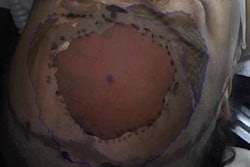Dear Molecular Imaging Insider,
FDG-PET/CT and contrast-enhanced CT have long been utilized in staging of disease, such as non-small cell lung cancer (NSCLC), due to heightened sensitivities and specificities. However, there remains some question about the efficacy of the modalities in assessing the recurrence of NSCLC after treatment.
Swiss researchers explored how well FDG-PET/CT and contrast-enhanced CT performed in detecting lesions found in follow-up surveillance scans. The results are available in today's news report.
In other news, Spanish researchers tested a dedicated breast PET scanner and found a high false-negative rate for detecting in situ carcinomas in women with BI-RADS 4 lesions. The findings raise questions about the suitability of the system for working up suspicious breast lesions.
FDG-PET/CT also will not help much in predicting progression-free or overall survival among patients with peripheral T-cell lymphoma. Israeli researchers found the hybrid imaging scans performed during or after chemotherapy were not significantly associated with patient survival.
Researchers from the U.K. and Australia are reporting early success with a PET/MRI-based motion correction model that, so far, has significantly improved the detection of cancer. The study demonstrated significant improvements in quantification and detection of PET-avid lesions using multiple tracers and in multiple organ locations, with specific case examples showing where motion correction has the potential to affect diagnosis or patient care.
Italian researchers have discovered a reliable clinical marker that links levels of amyloid deposits in the brain with increased episodic memory impairment through florbetaben-PET imaging. The key is a particular standardized uptake value ratio for florbetaben tracer uptake that distinguishes between low and high amyloid retention.
Make the Molecular Imaging Community part of your daily routine to see the latest news and novel research from Europe and around the world.



















